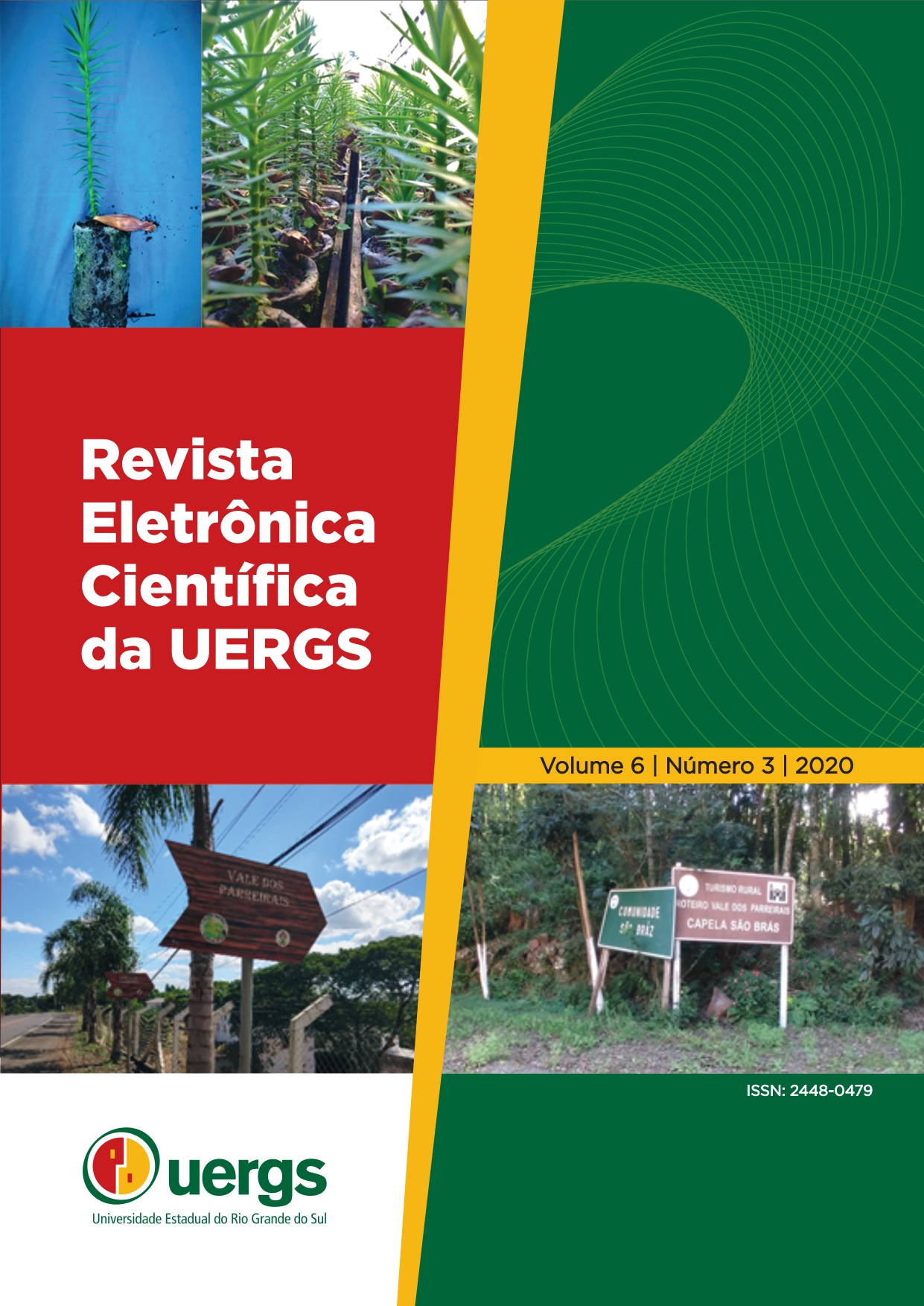Reaproveitamento de cinza de casca de arroz e PP- pós consumo
avaliação da incorporação dos resíduos nas propriedades mecânicas do concreto
DOI:
https://doi.org/10.21674/2448-0479.63.232-238Palavras-chave:
Resíduos. Reciclagem. SustentabilidadeResumo
A incorporação da cinza de casca de arroz (CCA) está se popularizando devido à crescente conscientização sobre os impactos ambientais resultantes da alta produção de cimento Portland comum. É a característica deste resíduo apresentar alto teor de sílica (SiO2). Uma outra problemática é a grande produção de embalagens alimentícias de polipropileno (PP) que são descartadas após o consumo sem o destino adequado, sendo que estes materiais levam centenas de anos para se degradar. Este artigo analisa as potencialidades da substituição em diferentes teores de cimento pela CCA e da areia pelo PP para a produção de um concreto sustentável. As propriedades mecânicas do concreto são estudadas como parte deste trabalho e o traço foi calculado para produzir um concreto de resistência mecânica de 40MPa para ser utilizado como referência para os demais traços. Os ensaios de resistência à compressão axial, diametral e módulo de elasticidade foi avaliado aos 28 e 90 dias de cura úmida. O uso destes resíduos apresentaram resultados semelhantes ao do concreto de referência, para todas as propriedades avaliadas, podendo-se concluir que com o estudo de traços de diferentes teores destes resíduos pode-se atingir um concreto com bom desempenho mecânico e reduzindo o consumo de cimento e da areia, que é uma matéria prima não renovável.
Downloads
Referências
ASSOCIAÇÃO BRASILEIRA DE NORMAS TÉCNICAS. NBR 5738: Concreto - Procedimento para moldagem e cura de corpos de prova. Rio de Janeiro: ABNT, 2016.
ASSOCIAÇÃO BRASILEIRA DE NORMAS TÉCNICAS. NBR 5739: Concreto - Ensaio de compressão de corpos de prova cilíndricos. Rio de Janeiro: ABNT, 2018.
ASSOCIAÇÃO BRASILEIRA DE NORMAS TÉCNICAS. NBR 7222: Concreto e argamassa — Determinação da resistência à tração por compressão diametral de corpos de prova cilíndricos. Rio de Janeiro: ABNT, 2011.
ASSOCIAÇÃO BRASILEIRA DE NORMAS TÉCNICAS. NBR 8522: Concreto - Determinação dos módulos estáticos de elasticidade e de deformação à compressão. Rio de Janeiro: ABNT, 2017.
ABU, Noaman Md.; REZULKARIM, Md.; ISLAM Md. Nazrul. Comparative study of pozzolanic and filler effect of rice husk ash on the mechanical properties and microstructure of brick aggregate concrete -Heliyon, v. 5, 2019.
CATOIA, Thiago. Concreto ultraleve estrutural com perolas de EPS: caracterização do material e estudo de sua aplicação em lajes. Tese (Doutorado em Engenharia civil) –Universidade de São Paulo, São Carlos, 2012.
CDIAC. Carbon dioxide information analysis center. CDIAC, 2017. Disponível em: http://cdiac.ornl.gov/trends/emis/tre_glob_2008.html. Acesso em: 15 de 5 de 2020.
CHOI, W.; YONG, D.; KIM, Y.; MOHAME,L. Characteristics of mortar and concrete containing fine aggregate manufactured from recycled waste polyethylene terephthalate bottles, Construction and Building Materials, v. 23, 2829-2835, 2009.
DIAMOND, Sidney. The microstructure of cement paste and concrete––a visual primer- Cement and Concrete Composites. v. 26, 919-923, 2004.
FIGUEREDO, Tiago. Análise sobre a implantação de silos de armazenagem de milho em propriedades agrícolas de pequena escala de produção: um estudo de caso no município de Guaporé/RS. Monografia (Graduação) – Bacharelado em Desenvolvimento Rural, Universidade Federal do Rio Grande do Sul, 19 dez. 2017.
G1. http://g1.globo.com/rs/rio-grande-do-sul/campo-e-lavoura/noticia/2015/04/producao-dearroz-no-rs-chega-77-mil-toneladas-com-87-da-area-colhida.html. Acessado em: 02 de 10 de 2019.
NOAMAN , M.A. M.N.; ISLAM, M.R.; ISLAM, M.R. Karim Mechanical properties of brick aggregate concrete containing rice husk ash as a partial replacement of cement- Journal of Materials in Civil Engineering, v. 30, 1-10, 2018.
MADANDOUST, Rahmat; RANJBA, Mohammad; MOGHADAM, Ahmadi; MOUSAV, Yasin. Mechanical properties and durability assessment of rice husk ash concrete-Biosystems engineering, v. 110, 144-152, 2011.
MEHTA P.K. Pozzolanic and Cementitious By-Products as mineral Admixtures for concrete: A Critical Review - ACZ SP-79, v.79, 1-46,1983.
MINISTÉRIO DE MINAS E ENERGIA - MME . Perfil da areia para a construção civil. Disponível em: http://www.mme.gov.br/documents/1138775/1256650/P22_RT31_Perfil_de_areia_para_construxo_civil.pdf/9745127c-6fdc-4b9f-9eda-13fa0146d27d. Acesso em: 20 fev. 2020.
VAN. N.; TUAN, G.; YE, K.; VAN, Breugel. O. Copuroglu Hydration and microstructure of ultra-high performance concrete incorporating rice husk ash - Cemente concrete. v.41, 1104-1111, 2011.
ZAREEI, Seyed Alireza; AMERI, Farshad; DOROSTKAR, Farzan; AHMAD, Mojtaba. Rice husk ash as a partial replacement of cement in high strength concrete containing microsilica: Evaluating durability and mechanical properties- Case Studies in Construction Materials. v. 7, 73-81, 2017.
Downloads
Publicado
Como Citar
Edição
Seção
Licença
A reprodução total dos artigos da Revista em outros meios de comunicação eletrônicos de uso livre é permitida de acordo com a licença Creative Commons Atribuição-NãoComercial-CompartilhaIgual 4.0 Internacional.

